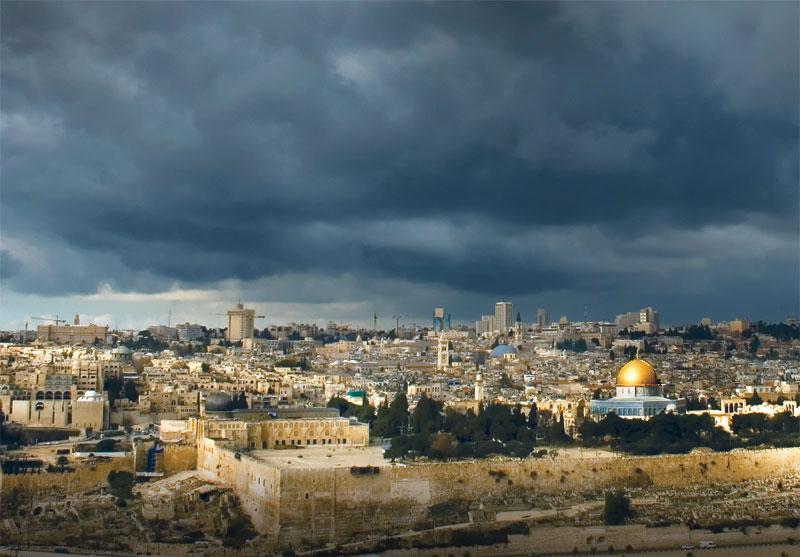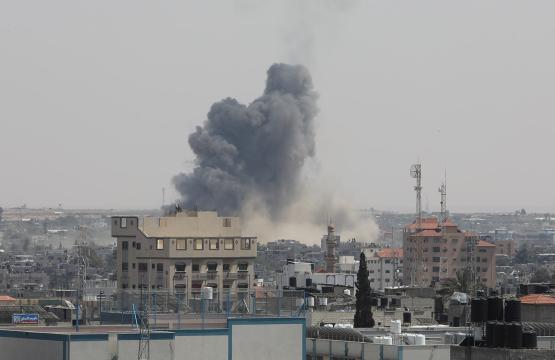
Do YOU want to understand the conflict in the Middle East?
Let me simplify it for you; look at a map of the United States.
Maybe you’re thinking: “Farah, why should I look at a map of the U.S. to understand the Middle East?”
Bear with me. With misinformation, disinformation, and faulty premises prevalent in Mideast assumptions, this fresh analogy will really put things in perspective.
Imagine the state of New Jersey is Israel and the United States is the entire Middle East.
Israel and New Jersey are about the same size. The U.S. and the Middle East are also in the same ballpark.
New Jersey has a nice coastline on the Atlantic Ocean, just as Israel has a beautiful one on the Mediterranean.
New Jersey represents about 0.2 percent of the land mass of the U.S., with the other 49 states controlling 99.8 percent. The same is true for Israel and the Middle East.
New Jersey and Israel have about the same population – 8.5 million. The other states have about 320 million. (The Middle East population is higher at close to 400 million. This figure doesn’t include non-Arab Iran, which I’ll address in a moment.)
Now imagine there is a “grievance” between the 49 other states and little New Jersey. The grievance is that New Jersey has too much land. The other states want to slice New Jersey in half and create a new state with foreign refugees, while also chopping the capital of Trenton in half, making it the dual capital of New Jersey and the new state of foreign refugees.
If you can imagine such a scenario, you’ve now got an understanding of what is commonly referred to as the Arab-Israeli conflict.
But it’s actually much worse than that—and even more absurd.
For this to be a serious analogy, we have to picture the 49 American states with the “grievance” in a near constant state of war with each other. Pennsylvania is consumed in civil war. Hundreds of thousands are dead. There are close to one million refugees who have fled the conflict. It’s a breeding ground for terrorists. The battle is spilling over into Delaware and part of New York.
Meanwhile, there are other wars taking place between Texas and Oklahoma. And faraway California is developing nuclear weapons and threatening to destroy New Jersey. California is also sponsoring terrorism all over the rest of North America.
Sometimes, missiles from Delaware are fired into population centers in New Jersey. New York sometimes sends terrorists through the Lincoln Tunnel to attack civilians in Union County.
While the 49 states are in conflict with each other, there is one thing on which they agree. New Jersey has to go. Over the past 70 years, the 49 states have waged wars of annihilation against New Jersey four times. All four times, New Jersey has miraculously prevailed. In moments of candor, the leaders of the other 49 states will admit their ultimate goal is to destroy New Jersey and that cutting it up is just an interim step to their real objective.
If you can picture such a scenario, you are very close to understanding the realities of the Middle East conflict.
It’s really that simple. Anyone who believes that the Arab nations’ grievance with Israel is primarily about land is living in a world of make-believe. The Arabs and Iran have 99.8 percent of the landmass of the Middle East even with the current Israeli borders. Israel really does have 0.2 percent, just like New Jersey. And the Muslim nations of the Middle East all agree on just one thing: Israel controls too much land.
Who in their right mind would believe it? Would you accept the conventional wisdom that dividing New Jersey in half from north to south and handing over the western half to the other 49 would actually result in peace? Would you accept the premise that this “compromise” would make the remaining sliver of New Jersey more secure? Would you think appeasing the aggression of the 49 in this way would really provide a permanent solution to the conflict?
It’s an old cliché, but there’s a lot of truth in it: The definition of insanity is doing the same thing over and over again while expecting different results.
That’s what the U.S. and the rest of the global elite have been doing in pursuit of an elusive peace in the Middle East for at least the past 30 years.
The problem, of course, is not that Israel doesn’t desperately seek a meaningful and lasting peace with its neighbors in the region. It’s hard to imagine any nation in history that has tried harder to achieve it.
But the Middle East remains in a seething cauldron of hatred, violence, and war—and Israel has nothing to do with any of it.
First, remember there is a blood feud within the Islamic Middle East. Islam is generally divided into two camps: Sunni and Shia Islam. These two camps hate each other and have been involved in horrific wars for 1,200 years. Each camp considers the other “infidels” and “apostates.” Saudi Arabia is the stronghold of the Sunnis and Iran the base of Shia Islam.
Syria, a client state of Shiite Muslim Iran, is wracked by a civil war, with Sunni terrorists supported by ISIS as its biggest challenge. The war has cost hundreds of thousands of lives and created a refugee crisis affecting nearly one million people—many of them Believers. There is no end in sight to the violence. Israel shares a border with Syria. Israel’s only real involvement in the conflict is protecting its territory and offering humanitarian relief to the victims of this carnage.
That war has spilled over to Lebanon, where Shiite Iran-sponsored Hezbollah controls the southern border with Israel. If Hezbollah wasn’t preoccupied with its battle with ISIS and propping up the Syrian regime of Bashar al-Assad, it would probably be firing missiles into Israel as it has many times in the past.
Jordan, a stone’s throw across the river from Israel, is also on guard against ISIS and other terrorist threats. It is a Sunni-dominated state at relative peace with Israel. But the stability of the moderate regime of King Abdullah is always threatened by more extreme Sunni terrorism as well as expansionist Shia Islam.
How about Egypt? During Barack Obama’s administration, the president of Egypt was overthrown and replaced briefly by an extremist Muslim Brotherhood leader who sought to abrogate the nation’s peace treaty with Israel. But the military stepped in and installed a moderate general in power.
Because the forces of extremist Sunni Islam are powerful inside the country, another coup could turn Egypt into a dangerous, wellarmed enemy of Israel at any time.
Another major player in the region is Iran, which is working hard toward developing nuclear weapons, exerting influence over Iraq, Syria, and Lebanon, and is just as relentless in its existential threats to destroy Israel as her Arab neighbors have been.
If all of those challenges aren’t enough, we must also factor in Turkey, which had long been under the control of moderate, secular leadership. The country is now moving rapidly toward dictatorship under a leader who dreams of restoring a Sunni Islamic Caliphate and a new Ottoman-style empire in which it controls the entire Middle East, including, of course, Israel.
That’s a bird’s-eye view of the larger Middle East, without even mentioning the current war between Saudi Arabia and Iran quietly taking place in Yemen, far from Israel.
Yet, the world has deluded itself into believing the only chance for peace in the Arab-Israeli stalemate is the roadmap laid out long ago for a two-state solution that involves carving up the peaceful, democratic state of Israel.




